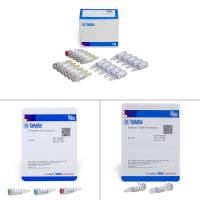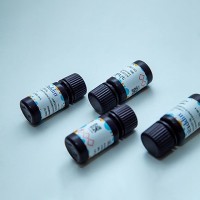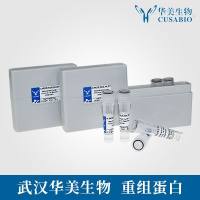RACE System for Rapid Amplification of cDNA Ends
互联网
实验原理
实验步骤
1. 1X Wash Buffer for S.N.A.P. Procedure
1) Pipette 1 ml of the wash buffer concentrate into a 50-ml graduated cylinder.
2) Add 18 ml of distilled water and 21 ml of absolute ethanol. Mix thoroughly.
3) Transfer to an appropriate-sized glass bottle. Cap and store at 4°C.
2. 70% Ethanol Wash for S.N.A.P. Procedure
1) Add 35 ml of absolute ethanol and 15 ml of distilled water to a 50-ml graduated cylinder.
2) Transfer to an appropriate-sized glass bottle. Cap and store at 4°C.
3. First Strand cDNA Synthesis
3) Mix gently, and collect the reaction by brief centrifugation. Incubate for 1 min at 42°C.
4) Add 1 μl of SuperScript™ II RT. Mix gently and incubate for 50 min at 42°C.
5) Incubate at 70°C for 15 min to terminate the reaction.
6) Centrifuge 10 to 20 s and place the reaction at 37°C.
7) Add 1 μl of RNase mix, mix gently but thoroughly, and incubate for 30 min at 37°C.
4. S.N.A.P. Column Purification of cDNA
1) Equilibrate the binding solution to room temperature.
3) Add 120 μl of binding solution (6 M NaI) to the first strand reaction.
4) Transfer the cDNA/NaI solution to a S.N.A.P. column. Centrifuge at 13,000 x g for 20 s.
7) Wash the cartridge two times with 400 μl of COLD (4°C) 70% ethanol as described in step 6.
8) After removing the final 70% ethanol wash from the tube, centrifuge at 13,000 x g for 1 min.
1) Add the following components to each tube and mix gently:
3) Add 1 μl TdT, mix gently, and incubate for 10 min at 37°C.
2) Add the following to a 0.2 or 0.5-ml thin-wall PCR tube sitting on ice:
3) Add 0.5 μl of Taq DNA polymerase (5 units/μl) immediately before mixing.
Denaturation: 94°C for 0.5-1 min
Annealing of primers: 55°C for 0.5-1 min
Primer extension: 72°C for 1-2 min
Final extension: 72°C, 5-7 min
Indefinite hold: 5°C, until samples are removed.
2) Equilibrate the thermal cycler block to 94°C.
3) Add the following to a 0.2 or 0.5-ml thin-wall PCR tube sitting on ice.
4) Add 0.5 μl of Taq DNA polymerase (5 units/μl) immediately before mixing.







